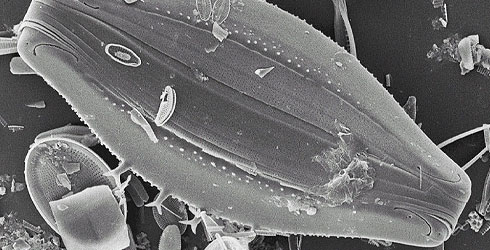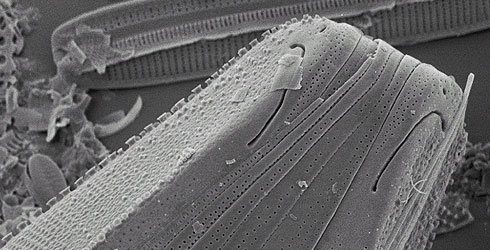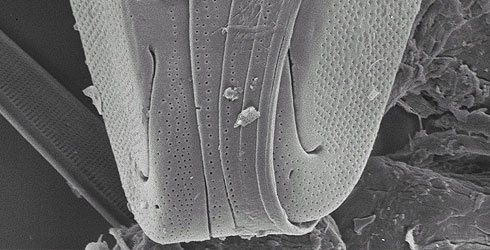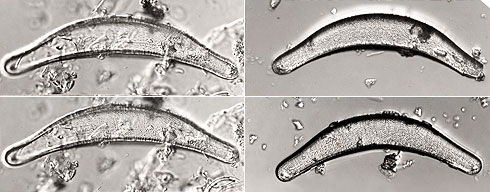Amphorotia hispida
Amphorotia hispida is a freshwater diatom endemic to Lake Baikal in Russia.
Lake Baikal is the world's largest and oldest lake. The lake holds nearly 20 per cent of the world's unfrozen surface fresh water and has many endemic species - organisms not found anywhere else. A fact explained by the the age of the lake, at 20 to 30 million years old plants and animals have had plenty of time to evolve into new species.
Amphorotia hispida was only recently discovered and described by Museum scientists Dr David Williams and Dr Geraldine Reid. The scientists also discovered a new genus Amphorotia while studying diatom diversity in Lake Baikal.
Species detail
Amphorotia hispida belongs to a genus, Amphorotia itself only recently discovered and described, which has an unusual distribution, many of its species in the Pacific, some extending as far south as the Mekon delta and, possibly, into marine waters.
-

Morphology
Get information regarding the form and structure of Amphorotia hispida as observed under a light microscope and an electron microscope.
-

Diagnostic description
Find out the characteristics that define Amphorotia hispida and how these differ from those of the type and other related species.
-

Distribution and habitat
Discover where Amphorotia hispida is found and the type of habitat it lives in.
-

References
Get reference material for Amphorotia hispida.
Images

Scanning electron microscope image of Amphorotia hispida.
© D Williams
Scanning electron microscope image of Amphorotia hispida.
© D Williams
Scanning electron microscope image of Amphorotia hispida.
© D Williams
Light microscope image of Amphorotia hispida
© D WilliamsAbout the author

Dr David Williams
Researching the phylogenetic relationships, distribution in the Pacific Ocean and systematic theory of diatoms.
Quote from author
'This remarkable new find is really only the tip of the iceberg,' said Williams. 'The diatom diversity in Lake Baikal, especially in its deeper waters, is almost entirely unknown and unstudied.'
